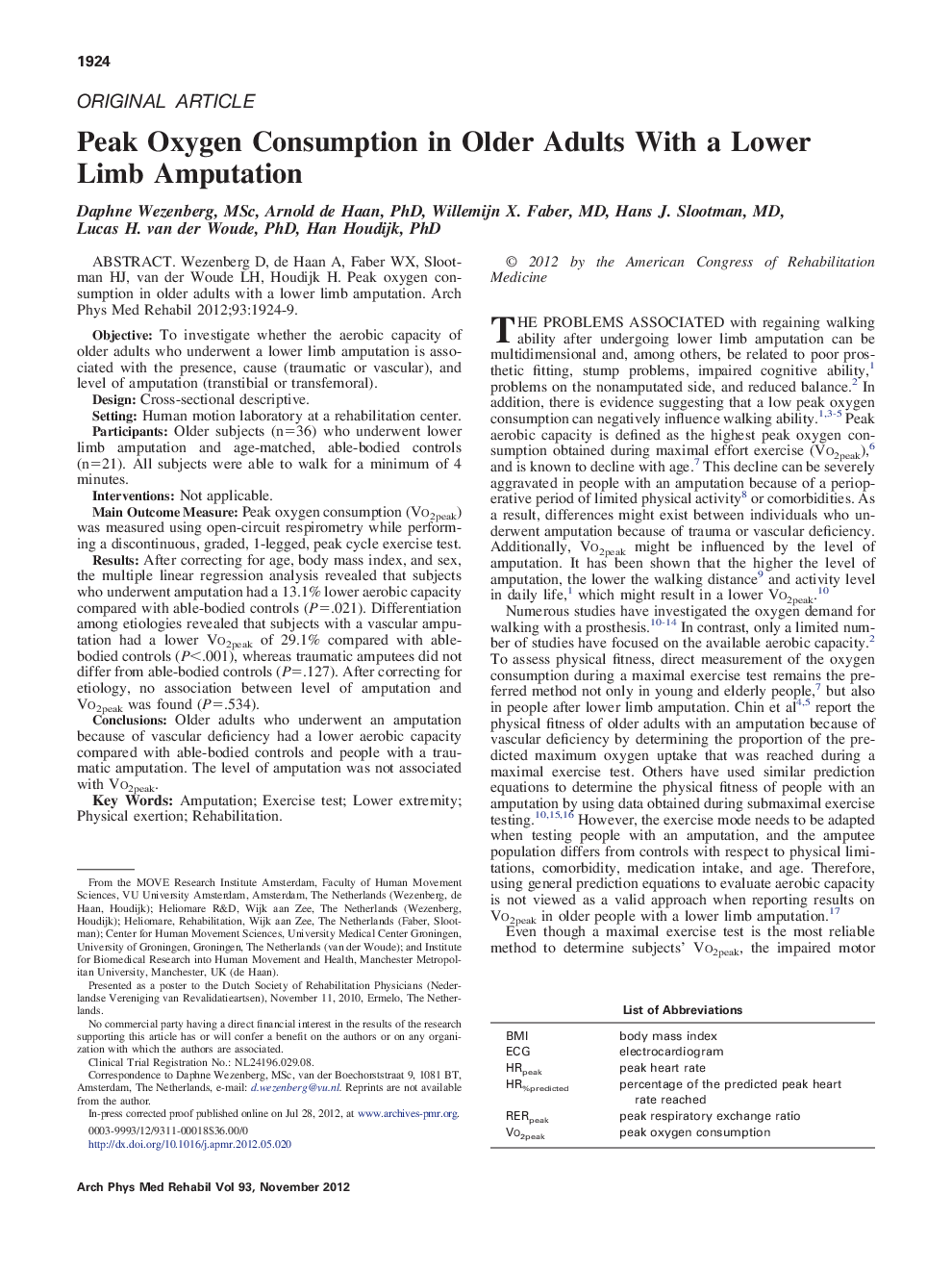| Article ID | Journal | Published Year | Pages | File Type |
|---|---|---|---|---|
| 3449619 | Archives of Physical Medicine and Rehabilitation | 2012 | 6 Pages |
Wezenberg D, de Haan A, Faber WX, Slootman HJ, van der Woude LH, Houdijk H. Peak oxygen consumption in older adults with a lower limb amputation.ObjectiveTo investigate whether the aerobic capacity of older adults who underwent a lower limb amputation is associated with the presence, cause (traumatic or vascular), and level of amputation (transtibial or transfemoral).DesignCross-sectional descriptive.SettingHuman motion laboratory at a rehabilitation center.ParticipantsOlder subjects (n=36) who underwent lower limb amputation and age-matched, able-bodied controls (n=21). All subjects were able to walk for a minimum of 4 minutes.InterventionsNot applicable.Main Outcome MeasurePeak oxygen consumption (Vo2peak) was measured using open-circuit respirometry while performing a discontinuous, graded, 1-legged, peak cycle exercise test.ResultsAfter correcting for age, body mass index, and sex, the multiple linear regression analysis revealed that subjects who underwent amputation had a 13.1% lower aerobic capacity compared with able-bodied controls (P=.021). Differentiation among etiologies revealed that subjects with a vascular amputation had a lower Vo2peak of 29.1% compared with able-bodied controls (P<.001), whereas traumatic amputees did not differ from able-bodied controls (P=.127). After correcting for etiology, no association between level of amputation and Vo2peak was found (P=.534).ConclusionsOlder adults who underwent an amputation because of vascular deficiency had a lower aerobic capacity compared with able-bodied controls and people with a traumatic amputation. The level of amputation was not associated with Vo2peak.
